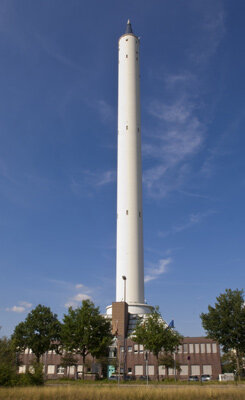Drop your thesis
Gravity plays a large role in many natural phenomena and technological processes, ranging from human development, biological and chemical reactions to mechanical aspects such as the deployment of antennas on spacecraft. Low-gravity research can lead to increased insight in natural phenomena and contribute to many technological improvements.
ESA can conduct research on several low gravity platforms. One of these platforms is the Zarm Drop Tower, located at the University of Bremen.
The Drop Your Thesis! programme gives bachelor and PhD students, the opportunity to perform scientific or technological research in microgravity conditions. The gravity levels obtained in the Zarm drop tower in Germany are as low as 10-6gand last for up to 10 seconds. This is the same level found on the International Space Station, and is adequate many of scientific research opportunities.
As a direct result of the research conducted during the Drop Your Thesis! campaigns, students have presented many theses at international conferences and published papers in renowned scientific journals.
Zarm drop tower

The Zarm Drop Tower is 146 metres high. An experiment capsule can be inserted in an evacuated tube and released from 120 meters, providing around 4.74 seconds of microgravity. As of 2007 a catapult mode is also offered, in which the experiment capsule is launched from the bottom of the tube. This essentially doubles the duration of microgravity to 9.3 seconds. At the end of the experiment the capsule is decelerated rapidly, undergoing 50g. This setup allows for a wide range of microgravity experiments to be performed in the drop tower.
Calls for proposals
With the Drop Your Thesis! programme, ESA provides university students the chance to perform research in facilities not usually accessible to students. The programme usually opens a call for proposals once a year in September with a three deadline for submission. Students and endorsing professors from their universities are encouraged to submit their proposals for experiments in Zarm. These can be in various fields.
ESA will select a team to perform a two-week campaign with the drop tower involving five launch opportunities. A team usually consists of up to four people and the development of the experiment after it has been selected lasts around six months. After the experiment is performed, the results need to be processed and documented. A more detailed timeline can be found here.


